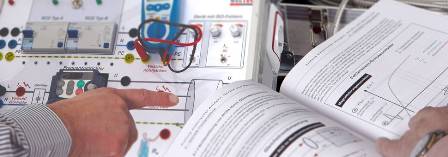Tasks of diagnostic work during operation of electrical equipment
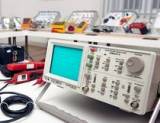 Diagnosis translated from Greek means "recognition", "determination". Technical diagnostics — this is the theory, methods and means by which a conclusion is made about the technical condition of the object.
Diagnosis translated from Greek means "recognition", "determination". Technical diagnostics — this is the theory, methods and means by which a conclusion is made about the technical condition of the object.
In order to determine the technical condition of electrical equipment, it is necessary, on the one hand, to establish what needs to be monitored and in what way, and on the other hand to decide what means will be needed for this.
There are two sets of questions in this problem:
-
analysis of the diagnosed equipment and selection of control methods to establish its actual technical condition,
-
construction of technical means for monitoring the condition of the equipment and the conditions of operation.
So, to make a diagnosis, you need to have an object and a means of diagnosis.
The object of diagnostics can be any device, if at least it can be in two mutually exclusive states — working and non-working, and it is possible to distinguish elements in it, each of which is also characterized by different states. In practice, the real object in the study is replaced by a diagnostic model.
Actions specially created for the purposes of diagnostics of a technical condition and delivered to the object of diagnostics by the means of diagnostics are called test influences. Distinguish between monitoring and diagnostic tests. A control test is a set of sets of input actions that make it possible to verify the functionality of an object. A diagnostic test is a set of sets of input influences that make it possible to search for a fault, that is, to determine the failure of an element or defective node.
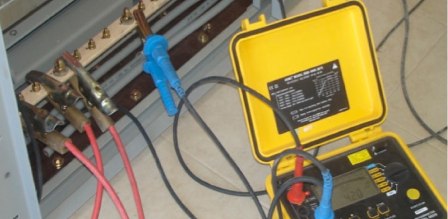
The central task of diagnostics is to detect defective elements, that is, to determine the place and possibly the cause of the failure. In electrical equipment, this problem occurs at various stages of operation. Therefore, diagnostics is an effective means of increasing the reliability of electrical equipment during its operation.
The installation troubleshooting process usually includes the following steps:
-
logical analysis of existing external signs, compiling a list of malfunctions that can lead to failure,
-
choosing the optimal version of the checks,
-
switching to searching for a faulty node.
Let's look at the simplest example. The electric motor along with the drive mechanism does not rotate when voltage is applied to it.Possible reasons - the coil is burnt, the motor is stuck. Therefore, the stator winding and bearings must be checked.
Where to start the diagnosis? Easier with the stator winding. Checks start with him. Then, if necessary, the engine is disassembled and the technical condition of the bearings is assessed.
Each specific search has the character of a logical study that requires knowledge, experience, intuition of the personnel servicing the electrical equipment. At the same time, in addition to knowing the design of the equipment, signs of normal operation, possible causes of failure, it is necessary to have troubleshooting methods and be able to correctly select the necessary one.
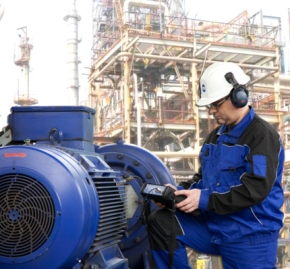
There are two main types of search for failed items—sequential and combined.
In the first method, the hardware checks are performed in a certain order. The result of each check is analyzed immediately, and if the damaged element is not identified, the search continues. The order of performing the diagnostic operations can be strictly fixed or depend on the results of previous experiments. Therefore, programs that implement this method can be divided into conditional, in which each subsequent check begins depending on the result of the previous one, and unconditional, in which the checks are performed in some predetermined order. With human input, flexible algorithms are always used to avoid unnecessary checks.
When using a combinational method, the state of an object is determined by performing a certain number of checks, the order of which does not matter.Failed elements are identified after performing all tests by analyzing the results obtained. This method is characterized by situations where not all the obtained results are necessary to determine the state of the object.
The mean time to failure detection is usually used as a criterion for comparing different troubleshooting systems. Other indicators can be applied — the number of checks, the average speed of receiving information, etc.
In practice, in addition to those considered, it is often used a heuristic method of diagnosis... Strict algorithms are not applied here. A certain hypothesis is put forward about the expected location of failure. The search is in progress. Based on the results, his hypothesis is refined. The search continues until the faulty node is identified. Often this approach is used by a radio technician when repairing radio equipment.
In addition to the search for damaged elements, the concept of technical diagnostics also covers the processes of monitoring the technical condition of electrical equipment in the conditions of its purpose. In this case, the person working with the electrical equipment determines the compliance of the output parameters of the blocks with the passport data or technical specifications, identifies the degree of wear, the need for corrections, the need to replace individual elements and indicates the time of preventive measures and repairs.
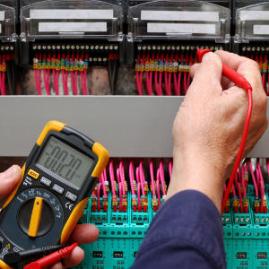
The use of diagnostics makes it possible to prevent damage to electrical equipment, determine its suitability for further work and reasonably determine the timing and scope of repair work.It is recommended to carry out diagnostics both when using the existing system for preventive maintenance and technical maintenance of electrical equipment (PPR system), and in the case of transition to a new, more advanced form of work, when repair work is not carried out after a certain in advance, but according to the results of the diagnosis, if it is concluded that further operation may cause damage or become economically impractical.
When implementing a new form of maintenance of electrical equipment in agriculture, the following should be carried out:
-
maintenance according to schedules,
-
scheduled diagnostics after certain periods or time of operation,
-
current or major repair according to the assessment of the technical condition.
During maintenance, diagnostics are used to determine the operability of equipment, check the stability of settings, identify the need for repair or replacement of individual units and parts. In this case, the so-called are diagnosed. Summarized parameters that carry maximum information about the state of the electrical equipment — insulation resistance, temperature of individual nodes, etc.
During regular inspections, parameters are observed that characterize the technical condition of the device and make it possible to determine the remaining life of assemblies and parts that limit the possibility of further operation of the equipment.
Diagnostics carried out during routine repairs at the maintenance and repair points or at the place of installation of electrical equipment allows to assess the condition of the windings in the first place.The remaining life of the coils must be greater than the period between current repairs, otherwise the equipment must be repaired. In addition to windings, the condition of bearings, contacts and other assemblies is assessed.
In the case of maintenance and routine diagnostics, the electrical equipment is not disassembled. If necessary, remove the protective screens of the ventilation windows, terminal covers and other quick-dismountable parts that provide access to the modules. A special role in this situation is played by an external examination, which makes it possible to determine damage to the terminals, the box, to determine the presence of overheating of the windings by darkening the insulation, to check the condition of the contacts.
Basic diagnostic parameters
As diagnostic parameters, the characteristics of the electrical equipment that are crucial for the service life of individual units and elements should be selected. The wear process of electrical equipment depends on the operating conditions. Operating modes and environmental conditions are critical.
The main parameters checked when assessing the technical condition of electrical equipment are:
-
for electric motors — the temperature of the winding (determines the service life), the amplitude-phase characteristic of the winding (allows to assess the condition of the insulation of the coil), the temperature of the bearing unit and the clearance of the bearing (indicate the design of the bearings).In addition, for electric motors operating in humid and particularly humid rooms, the insulation resistance should be additionally measured (allows prediction of the service life of the electric motor),
-
for ballast and protective devices — resistance of the «phase zero» loop (control of compliance with protection conditions), protective characteristics of thermal relays, resistance of contact transitions,
-
for lighting installations — temperature, relative humidity, voltage, switching frequency.
In addition to the main ones, a number of auxiliary parameters can be evaluated, which give a more complete picture of the condition of the diagnosed object.

